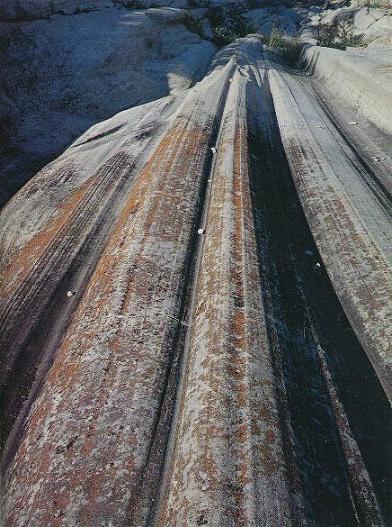Striations and Scratches and Gouges, Oh My! EarthCache
Striations and Scratches and Gouges, Oh My!
-
Difficulty:
-

-
Terrain:
-

Size:  (not chosen)
(not chosen)
Please note Use of geocaching.com services is subject to the terms and conditions
in our disclaimer.
Come take a Lake Erie island adventure and claim a smiley
on an earthcache showing some unique Ohio glacial
geomorphology.

Striations and Scratches and Gouges, Oh My!
This unique Ohio glacial geomorphology feature is 400 feet long, 35
feet wide, and up to 10 feet deep. It is striations, scratches, or
gouges in the Devonian aged bedrock that contain marine fossils of
saltwater creatures that swam 350 to 400 million years ago. It is
located on Kelleys Island, Ohio.
These striations, scratches, or gouges are located on the north
side of the island and are the largest and easily accessible in the
world. They were carved into the bedrock by the Wisconsinian
glacier (during the Pleistocene Ice Age) during the last ice age.
During that episode of glaciation, the ice, probably hundreds of
feet thick, flowed from the north and formed what is now the Lake
Erie Basin.
When the glaciers formed the Lake Erie basin, the islands' bedrock
deposits in the Western Basin eroded more slowly than the softer
shales to the east. Thus, the western end of Lake Erie is
shallower, with the islands protruding above the present lake
surface. There are about two dozen islands appearing throughout the
Western Basin. These range from tiny outcroppings that come and go
with the lake level fluctuations to Pelee Island in Canada that is
the largest of the Lake Erie islands.
At the end of the Wisconsinian glaciation topsoil and organic
matter gradually covered the striations, scratches, or gouges.
Quarrying in the 1830s removed much of the topsoil and exposed huge
tracts of these striations, scratches, or gouges. The same
quarrying also destroyed many larger than the ones exposed
today.
Unlike most of the rest of the soils in northern Ohio with their
heavy deposits of clay, the bedrock of the Kelleys Island generates
a thin alkaline soil. This allow for a very different kind of plant
and insect life. Hackberry trees are most common as well as Prickly
Ash and Wafer Ash. These trees are the home for the caterpillar of
the snout butterfly and giant swallowtails.
To claim a find, please email me the answers to these questions
below as well as upload a picture of yourself displaying your
GPSr.
Question 1: What are these striations, scratching, or gouging
called?
Question 2: What name or kind of stone is the exposed bedrock that
is striated, scratched, or gouged?
Question 3: When did the striations, scratching, or gouging
occur?
Additional Hints
(No hints available.)